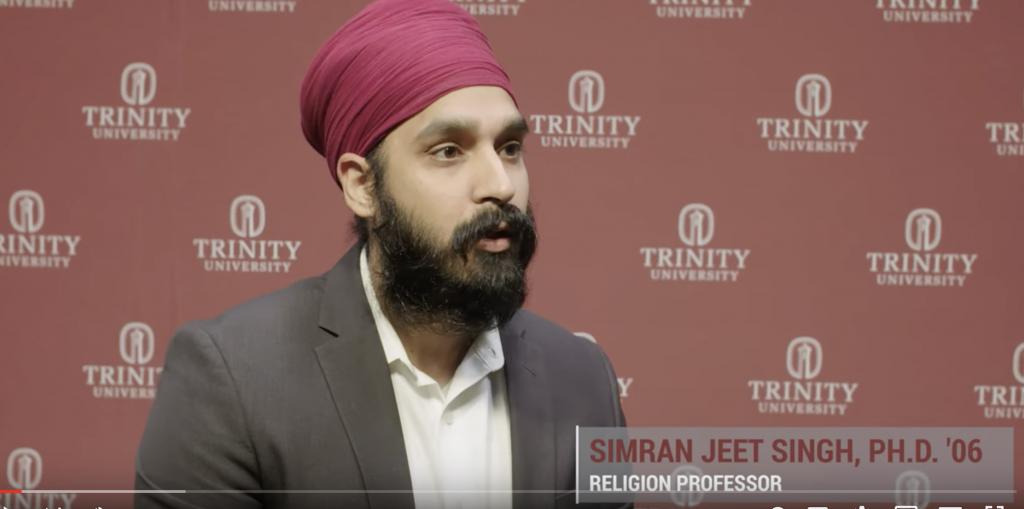
I start with a quote from Joclyn Rekis, a religious identity and epistemic injustice: An intersectional account as it resonates with my experience in education both as a student and an educator.
‘Prejudice therefore operates as an “obsta-cle to truth” (43). In turn, the ethical harm, which coincides with the epistemic harm, is tobe wronged in one of the very capacities that makes one a human being—one’s capacity for reason (44). In failing to be being treated as a rational agent who is a giver of knowledge, on account of a false understanding of one’s social type (that is, as someone who is not credible with respect to what they know), one must bear the pain of being “degraded qua knower,” and so of being considered less than fully human.’
Reki, J (2023)
- Miranda Fricker (Fricker 2007) first coined the phrase ‘Epistemic Injustice’, she believes individuals can be harmed in their capacity as ‘knowers’ when their testimony is wrongly diminished according to inequalities in social power.
- The quote speaks to my personal sensitivity to misinterpretation in society, education, and my own professional practice in industry when people occasionally make assumptions about my value structure and beliefs solely on my appearance and their initial perceptions. These assumptions are elevated when put in the context of faith.
With the four resources that were provided, there was a synergy or reoccurring underline theme that linked them all together. This theme was the assumptions formed from sometimes stereotypical views of value structure shaped from lack of knowledge of faith led communities. These assumptions ultimately can lead to missed opportunities to create meaningful knowledge exchange interactions.

Islam, women and sport: The case of visible Muslim women.
- Jawad refers to the International declaration IASPEGW (2008) ‘Accept and Respect’ statement which states: Islam is an enabling religion that endorses women’s participation in physical activity.
- The invisibility of Muslim women within the global sports world is partly due to social, political, economic, and educational factors.
‘For girls in school-level physical education and sport, tensions can also arise at the interface of religious requirements and physicality’.
Jawad (2022)
- In contrast to popular belief, within non- Muslim western societies due to the demonization through messages propagated by the global media in the wake of 9-11, Islam proclaims the equal value of men and women as essential contributors to society.
- A two-way knowledge exchange is vital to mitigate damaging stereotypes of both Islam and the west exacerbated by media hype.
- Stereotypes can be globally misunderstood and misused as islamophobia with women bearing a great deal of this impact.
- For visible Muslim women participation in sport from grass roots to the global professional platform can be challenging when trying to uphold Islamic codes of conduct requiring modesty in dress.
- In the last 10 years global sportswear giants such as Nike, Puma and Adidas have developed and advertised more ‘Modest sportswear lines’ but prior to this there was little or no visibility/knowledge around modest sportswear requirements within training areas and the field of play.
- Jawad sites the culture of ‘self-segregation’ acts Muslim women have to undertake because of ‘western’ biased systems such as public changing areas. As opposed to sex-segregated spaces in sport which she advocates, self-segregation can also be a barrier to visible Muslim women’s participation in sports. The inclusion of modest changing room areas, showering facilities are simple ways of making these spaces more inclusive for users with modest faith requirements.
‘In response to the diversity of experiences that exist today, the international ‘Accept and Respect’ declaration recommended that people working in the sport and education systems accept and respect the diverse ways in which Muslim women and girls practice their religion and participate in sport and physical activity. And, that international sport federations show their commitment to inclusion by ensuring that their dress codes for competition embrace Islamic requirements, taking into account the principles of propriety, safety, and integrity. Adopting such recommendations would lead to more opportunities for more women; a shift in sporting culture towards more inclusive practice that acknowledges the power of religious belief – and its effects on preferred body practices – in the lives of many’.
Jawad (2022).

Trinity University (2016) Challenging race, religion, and stereotypes in the classroom.
- Simran Jeet Singh begins the video by stating the USA view that it was founded on the principles of equality and justice for all. However, he was influenced by practices of injustice and racism such as Charlotte Protests, Police brutality and killings of young black men and Rhetoric around anti-Muslim sentiment.
- These are all things that we like to think do not exist in our society, but they are actively prevalent and need to be challenged.
- Jeet also states that we have a tendency as a society of trying to paint entire communities with a single brush stroke.
- We like to think all communities are the same, despite knowing that they are intersectional and diverse, and that no community is monolith.
- Jeet likes to challenge these beliefs, he gives the example of when he is travelling walking onto an airplane and being greeted by fear and funny looks from the fellow passengers (Jeet’s is visibly a Sikh wearing a turban and beard). He challenges basic stereotypes by striking up conversations, smiling, laughing even showing pictures of his family. He says ‘once they see I’m a ‘normal person’ this challenges their stereotypical views.
- Personally, I find this level of commitment to having to ‘reassure’ disturbing but again this resonates with my own experience of travel, education and the workplace.
- In the classroom Jeet states that he tries to bring knowledge to students that there are multiple ways of looking at things through multiple experiences of others and their own diverse intersectionality/ unique perspectives.
- Empathy is a key quality; I personally try to find ways of encouraging in my studio base work with students and Jeet is encouraging this.
- This allows the individual to engage with difference in a ‘constructive’ rather than ‘destructive’ manor.
- Like many, in my own teaching practice when student facing faith is considered by me personally only when an individual has visible signs of faith through their clothing. Modest wear, wearing a turban and so on.

- Through this process of exploring faith in the context of education and teaching spaces, I will consider how I can encourage an environment of empathy to faith value structures within my colleagues and student cohort by making spaces and students aware of the systems already in place within UAL that facilitate inclusive faith practices.
- I’ve also been made aware of the UAL multi-faith & wellbeing quiet space facilities available on campus and I will be signposting students to these faith inclusive facilities within my welcome back seminars to my student cohort at the beginning of each academic term, as well as pastorally to individuals when I feel it’s appropriate.
- The UAL Chaplains also offer pastoral and spiritual care to students from diverse faith backrounds and support students from faith societies. Students can contact there SU culture and diversity officer at culture-diversity@su.arts.ac.uk
I will advocate for having physical ‘faith holiday calenders’ visible in the staff room and student spaces, notice boards ext to encourage empathy and an open inclusive knowledge exchange dialogue about faith.
Bibliography
Appiah, K. A. (2014) Is religion good or bad? (This is a trick question). Youtube [Online]. 16 June. Available at: https://www.youtube.com/watch?v=X2et2KO8gcY
Reki, J. (2023) Religious Identity and Epistemic Injustice: An Intersectional Account. Hypatia 38, pp779–800. Available to download from Moodle via the Readings & Resources folder.
Jawad, H. (2022) Islam, Women and Sport: The Case of Visible Muslim Women. [Online]. Available at: https://blogs.lse.ac.uk/religionglobalsociety/2022/09/islam-women-and-sport-the-case-of-visible-muslim-women/
Trinity University (2016) Challenging Race, Religion, and Stereotypes in the Classroom. [Online]. Available at: https://www.youtube.com/watch?v=0CAOKTo_DOk
https://www.arts.ac.uk/students/student-diversity/quiet-spaces
2 responses to “Faith”
Nick, as always you are bringing your abilities to connect academic information with your own personal lived experiences. I found this really interesting to read, and I learnt more about your teaching approach. I also felt uncomfortable when I listened to Simran Jeet Singh talk about the work of ‘reassurance’ he needs to do. I was glad to see you reflecting on this, and I would be interested to learn more about your own unique experience.
Your reflections at the end show how empathy is deeply connected to your practice, and it was good to think about the very simple acts of signposting to Prayer Spaces at the start of the year for example. I wandered after reading this whether these spaces are working for all our students, and in what way? and I also wandered whether signposting is enough? Maybe we could be asking UAL Chaplains to come into our studios to bridge the gaps better?
Anyway – your writing have me lots of food for thought, so thank you! X
Hi Nick,
I found the idea of ‘Epistemic Injustice’ that you brought to your reflections on the resources and your own teaching environment really interesting. This particularly resonated with me when you note your own assumptions about who may or may not have a religious or spiritual belief by looking for typical clothing or dress. It made me wonder how discussions with students who bring their culture and traditions into textiles work, particularly around wearable items, was approached in your department and any reflections on what works well or that you may want to change.
I appreciated your conclusion about working to build a more empathetic environment with students and staff by trying to bring more awareness and understanding into different kinds of teaching sessions and through different kinds of signposting. This seems like it could be a really effective multi-pronged strategy!
Thank you again for being so generous with what you share. Lots to think about.